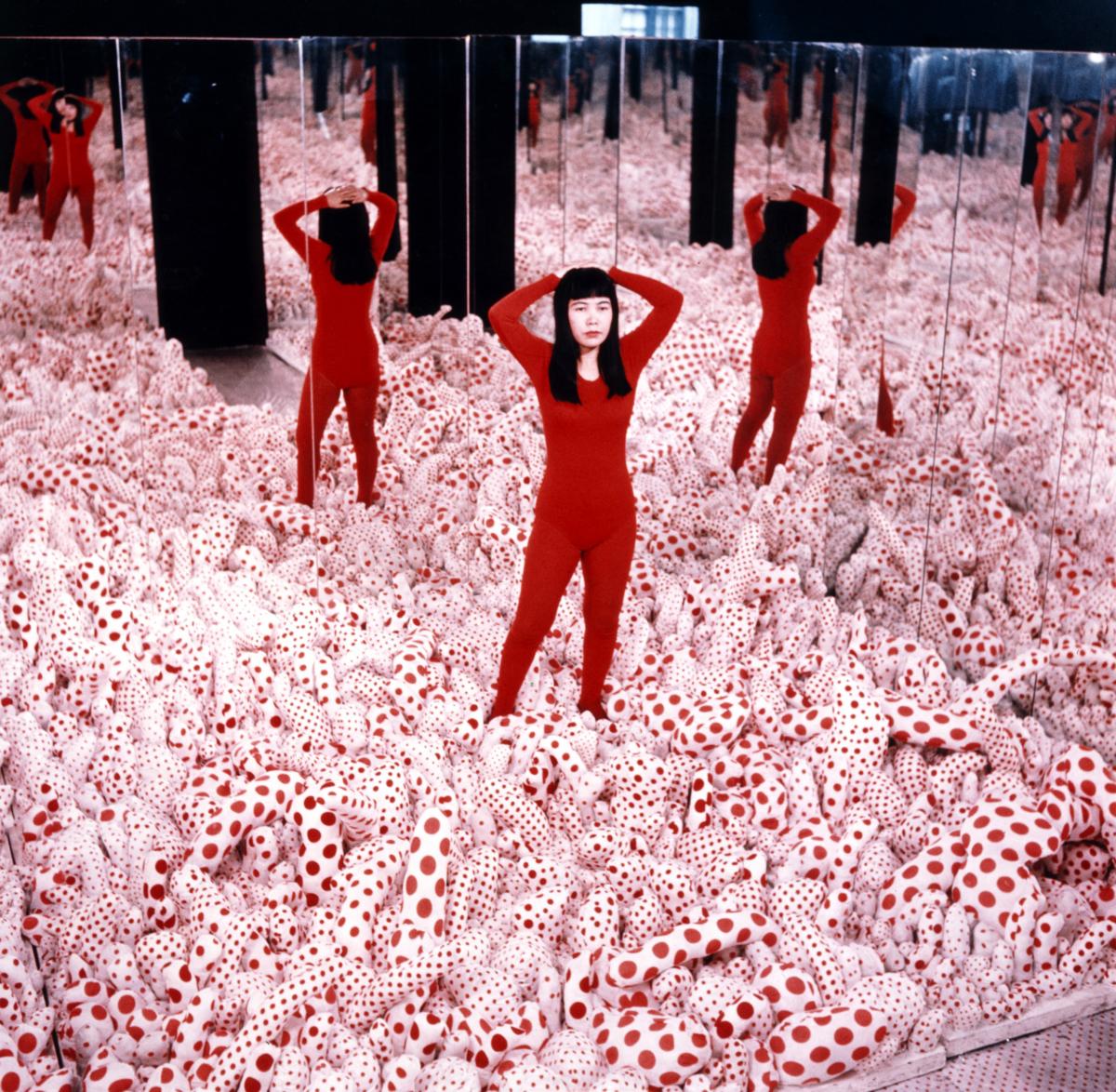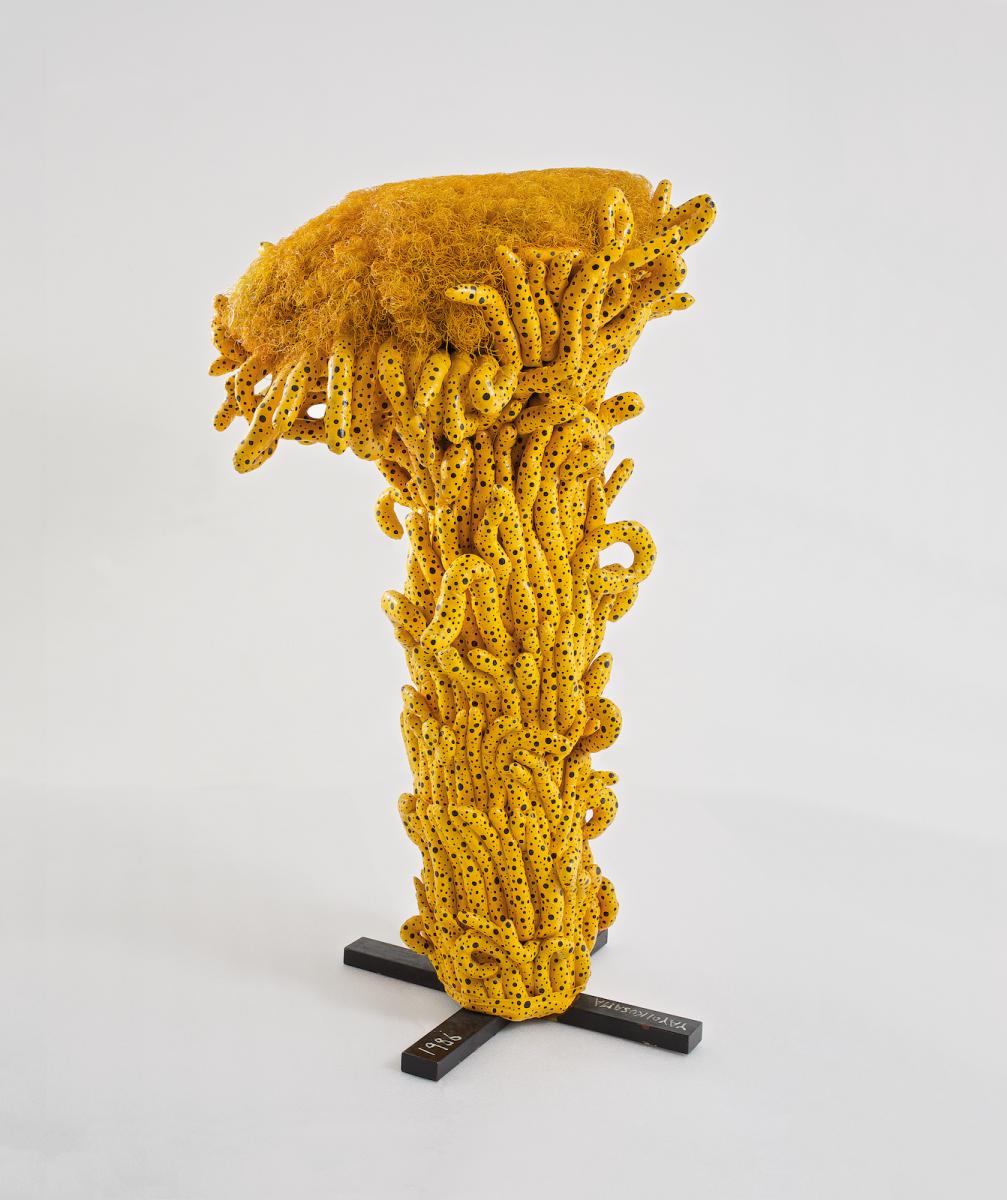This wonderful Cornish workshop and museum is dedicated to the legacy of studio pottery trailblazer Bernard Leach
JOINING THE DOTS: Yayoi Kusama
JOINING THE DOTS: Yayoi Kusama
16 Jan 2021
Now in her 90s, Yayoi Kusama is a towering figure in contemporary art, with works that have a compelling, curious beauty. We look at just two pieces, soon to go on show.
 Infinity Mirror Room – Phalli’s Field, 1965 installation. © Yayoi Kusama; Courtesy: Ota Fine Arts, Victoria Miro & David Zwirner
Infinity Mirror Room – Phalli’s Field, 1965 installation. © Yayoi Kusama; Courtesy: Ota Fine Arts, Victoria Miro & David Zwirner
Yayoi Kusama is more than polka-dot pumpkins...
‘Our Earth is only one polka dot among the million stars in the cosmos,’ Kusama once said, adding how such dots ‘are a way to infinity’. But, although famed for her spotty squash sculptures, ranging from the minute to the enormous (which, in recent years, have become a hot Instagram favourite), Kusama’s practice stretches much further than this single motif. It is true that an overarching obsession with dots has permeated her seven-decade oeuvre (a symptom of hallucinogenic visions related to her mental health), but her work also encompasses painting, performance, installation, poetry, fashion design and more.
'Her bombastic use of colour, nudity and dot patterns not only aligned with the burgeoning psychedelic aesthetic, but engaged with issues of sexuality and gender, anti-war protests and civil rights.'
The artist blazed a trail on the other side of the world. Kusama was born and raised in the rural region of Matsumoto in 1929, but decided to flee the expectations of her conservative family, arriving in New York City in 1958. Despite being a young woman who barely spoke the language, she threw herself into the art scene, gaining acclaim for her monochromatic canvases that questioned the notion of infinity through repetitive ‘nets’. She went on to conceive a number of ‘happenings’ that heralded a new age of performance art. Her bombastic use of colour, nudity and dot patterns not only aligned with the burgeoning psychedelic aesthetic, but engaged with issues of sexuality and gender, anti-war protests and civil rights. Though she returned to Japan in 1973, where she still works and lives, voluntarily, in a psychiatric unit, her influence is felt across the world.
The work above is called Infinity Mirror Room – Phalli’s Field
First shown at Castellane Gallery in 1965, this immense installation marked a turning point for Kusama. She had been making Accumulation sculptures, which involved attaching hundreds of hand-stitched tubers to household items to create surreal, animalistic environments, but the process was both physically and psychologically taxing. By utilising mirrors, she not only created an illusion of entire fields of spotted, phallic objects, but evoked a sense of infinite, repetitive space.
 Kusama’s one-metre-high sculpture Pollen, 1986. © Yayoi Kusama; Collection Of Ota Fine Arts
Kusama’s one-metre-high sculpture Pollen, 1986. © Yayoi Kusama; Collection Of Ota Fine Arts
Kusama presaged the selfie era
This is also the earliest example of the artist being photographed standing within her installations. ‘It is the first time she presents this idea of interaction,’ says Stephanie Rosenthal, director of Gropius Bau in Berlin and curator of the major retrospective opening in 2021. ‘She becomes the replacement for the spectator, showing us that we can become part of the “Kusama world”.’ The artist explains in her monograph Infinity Mirrors, that Phalli’s Field was designed to show that ‘I am one of the elements – one of the dots among the millions of dots in the universe’.
Repetition is the key
Kusama has created 20 immersive Infinity Mirror Rooms, which have drawn crowds at exhibitions across the globe. While each contains its own distinct aesthetic, whether that be hundreds of twinkling lights, illuminated pumpkins or delicate paper lanterns, they all utilise mirrors to create the illusion of endless, recurring space. While many would point to the dot as the unifying theme within her work, it is this concept of repetition that truly defines her practice. Her prolific output sees the recurrence of specific objects and patterns. Pollen (1986) is an excellent example of a work that has naturally evolved from themes first encountered decades before. Bulbous hand-sewn tubers have become elongated and reptilian, forming a flower-like shape that alludes to the artist’s interest in all things botanical. Dots, once again, decorate the surface, warping and crowding our line of sight. ‘What she does in her work is really what she sees,’ Rosenthal adds. ‘These are her visions.’
SEE
-
Yayoi Kusama – A Retrospective at Gropius Bau, Berlin
19 March–1 August 2021; berlinerfestspiele.de -
Two of Kusama’s Infinity Mirror Rooms at Tate Modern, from spring 2021 to spring 2022; tate.org.uk
This feature first appeared in the winter edition of The Arts Society Magazine, available exclusively to Members and Supporters
About the Author
Holly Black
JOIN OUR MAILING LIST
Become an instant expert!
Find out more about the arts by becoming a Supporter of The Arts Society.
For just £20 a year you will receive invitations to exclusive member events and courses, special offers and concessions, our regular newsletter and our beautiful arts magazine, full of news, views, events and artist profiles.
FIND YOUR NEAREST SOCIETY
MORE FEATURES
Ever wanted to write a crime novel? As Britain’s annual crime writing festival opens, we uncover some top leads
It’s just 10 days until the Summer Olympic Games open in Paris. To mark the moment, Simon Inglis reveals how art and design play a key part in this, the world’s most spectacular multi-sport competition



